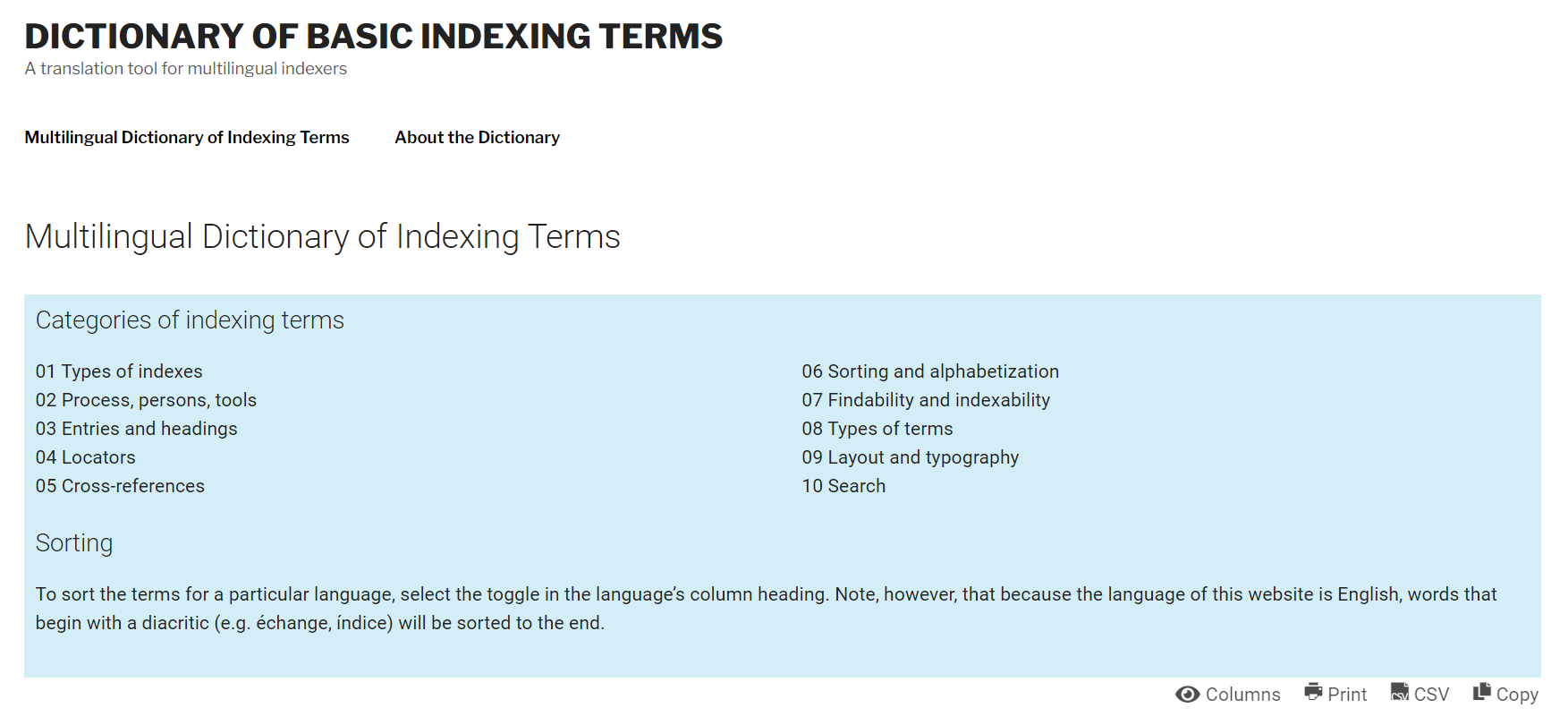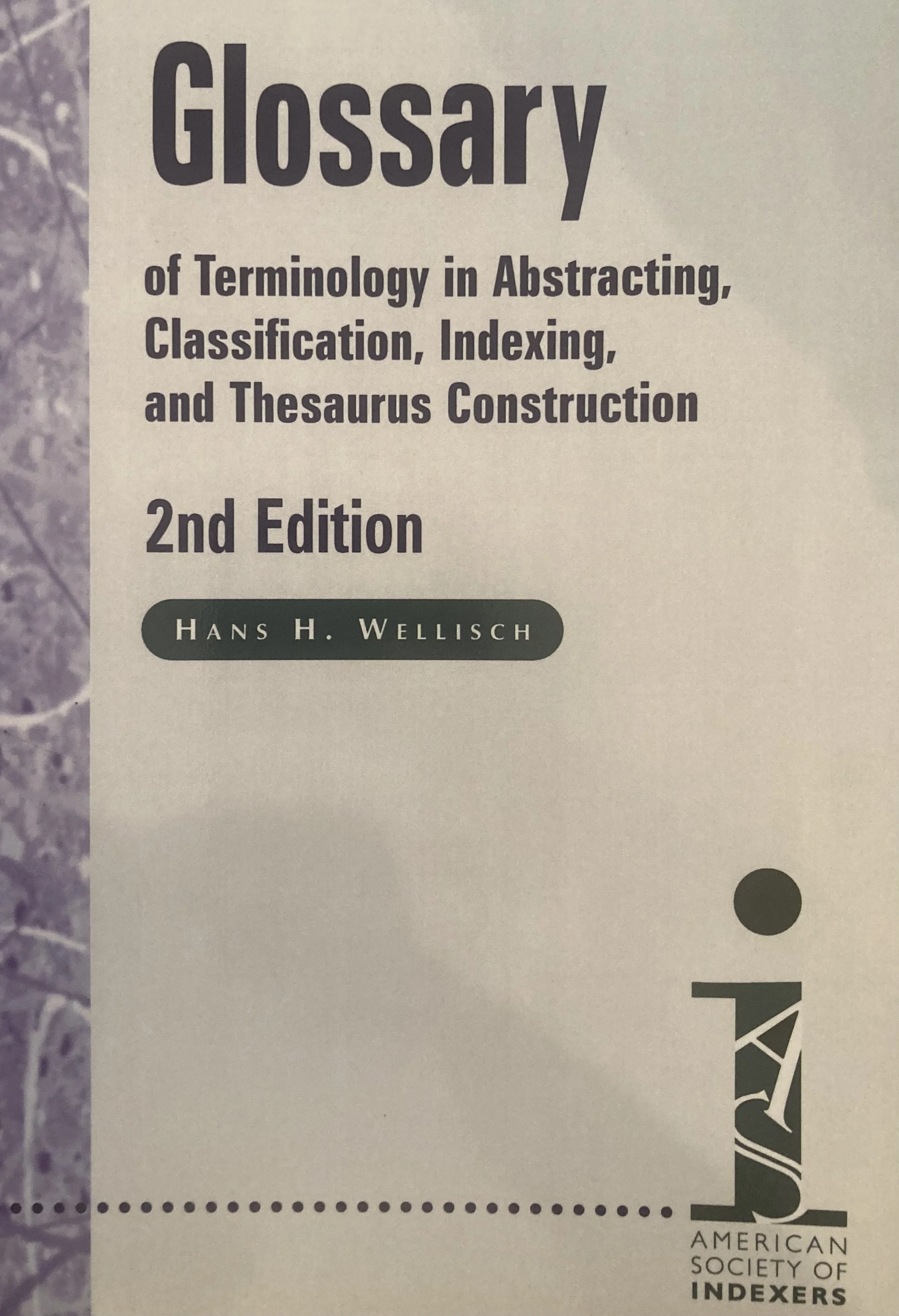Tools of the Trade, pt.7: Single-Field Dictionaries & Glossaries
Not so long ago, in February, I had a blog post that took a look at the different kinds of dictionaries that indexers might rely on. In it, I focused on the broad category of “dictionaries” to include language, biographical, and subject dictionaries.
There are also such things as single-field dictionaries, where the target audience is very specific, such as indexers or other information-science workers (e.g., librarians).
Single-Field Dictionaries & Glossaries
Dictionary of Basic Indexing Terms: A Translation Tool for Multilingual Indexers
Available for free online, this newly published resource was made known to me as I attended the International Indexing Conference, hosted in Berlin but also made available on Zoom. This dictionary is the real inspiration for this post.
The languages include English, German, Dutch, Spanish, Portuguese, and French.
As I recently indexed a book in Spanish and relied on the Chicago Manual of Style in Spanish to check terminology and formatting practices. While this dictionary will not replace the Spanish CMS, it definitely provides another helpful tool to turn to.
It is admittedly a work in progress, with efforts underway to add languages and ensure accuracy of existing terms. As it stands, it is likely to be useful to a lot of indexers across the world.
Glossary of Terminology in Abstracting, Classification, Indexing, and Thesaurus Construction, 2nd Edition, by Hans H. Wellisch
The glossary provides detailed information about all the specific terms involved in indexing and classification. Almost all of the entries include cross references.
For example, the entry for “abstract,” after defining the term, lists a host of See also references to terms including critical abstract, extract, indicative abstract, secondary document, slanted abstract, structured abstract, *summarization, and summary.
*A summarization being a statement of the overall subject of a document and forming the basis of subject headings (for library catalogs) and a summary being a brief statement of the findings and conclusion presented in a document.
Manual of European Languages for Librarians, 2nd Edition, by C.G. Allen.
As the title implies, this is not actually a dictionary, but it does contain glossaries for each language covered, and it has been so useful as I worked with Slavic and Turkic languages that I wanted to include it here.
It provides an explanation of *language characteristics for Germanic, Latin/Romance languages, Celtic, Greek, and Albanian languages, Slavonic, Baltic, Finno-Ugrian languages (i.e., Estonian, Finnish, Hungarian), and final section that examines Maltese, Turkish, Basque, and a note on Esperanto.
*Language characteristics include: the general characteristics of the language or language family in question, including word order and history; bibliolinguistics (i.e., book-related themes including the treatment of names, titles, books and volumes/editions, editorship, periodicity, etc.); alphabet (including phonetics/spelling rules); articles (e.g., definite, indefinite, partitive, etc.); and a basic overview of grammar including treatment/forms of nouns, adjectives, numerals, verbs, etc.
Each language section ends with a glossary of library-relevant terms such as “supplement,” “continuation,” “directory,” “index,” “volume,” etc.


